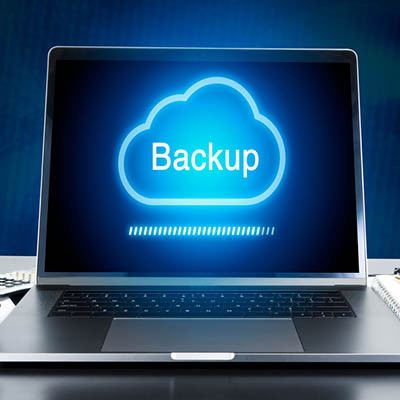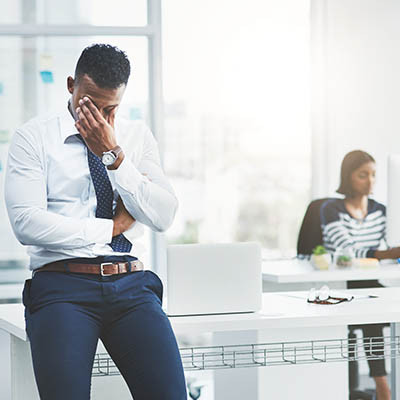Most businesses don’t have what it takes to survive a hardware failure or natural disaster, and we don’t mean in terms of “grit.” What we mean is in the sheer technological capacity to recover their data and continue operations. It’s bizarre, too, how easy data backup can be, provided you follow these three key tenets. With a little help from a qualified backup professional, your business can stay resilient even in the worst of times.
MicroLogix Network Services, LLC Blog
The conversation around B2B data security is no longer about having a backup, but about whether your backup actually works when you need it most. Data backup and disaster recovery solutions were once seen as “set it and forget it” tools, but this is no longer the case. In reality, your data backup strategy is much more complex, and if you fail to give it the attention it deserves, it could result in an extinction-level event for your business.
Be honest: Do you have a real plan for the day your server goes dark? We're not talking about a little glitch—we mean a full, sudden stop due to a failed disk, a nasty strain of ransomware, or an accidental keyboard slip. For too many businesses, the "plan" is just that dusty external drive they plug in at closing time. This isn't a strategy; it's a prayer, and one that will go unheard when you need it most.
That false comfort is your biggest IT blind spot, because if a simple copy-paste job was enough, we wouldn't see businesses vanish after a single data incident. Stop crossing your fingers and let's get you a recovery plan that actually works.
How much data do you think your business stores? How much of that data does your business need to operate? Regardless of your answers to these questions, one thing is for certain: you need to take action to ensure your business’ data is never put in harm’s way needlessly. It should be able to survive in the face of great adversity, whether it’s from a fire, weather incident, cyberattack, or simple user error.
When it comes to your business’ IT, there’s a nasty word called “downtime” that’s always referred to in a negative way, and for good reason. Downtime can be a business killer if it’s not monitored for and avoided. To help you understand just how dire downtime can be, we want to compare it to its natural enemy: uptime.
Nowadays, data is one of the most valuable assets we have. However, if we’re being honest, whenever we say “data,” what we’re referring to is knowledge. In this context, data has always been something that society has valued.
Consider the Library of Alexandria, widely regarded as the first library to transcend cultural prejudices and collect information from multiple civilizations. Its collection must have been breathtaking, but it isn’t around any longer. All that data, gone.
How likely is it that your business could experience similar data loss, and more critically, how prepared are you for that eventuality?
How much do you know about your business’ data backup infrastructure? Do you know how often data backups occur, or if they’re occurring at all? Regular backups are the key to a successful, sustained business, and multiple backups per day are your “Get out of jail free” card when you’re facing a data loss incident.
Backup is a decidedly unsexy topic to discuss, but it’s important nonetheless. You can’t trust that your files will always be there—not unless you take action to ensure they’re well-protected and preserved for when you need them most. While you’re busy with other parts of running your business, you need to know with certainty that your files are safe, and we can offer that.
Your business runs on data. You keep customer information, invoices, project files, inventory and much more. If you were to lose it, you face a myriad of problems from hits to your reputation to major downtime. Today is World Backup Day, so we thought it would be good to highlight just how important having a feature-rich and reliable backup strategy is.
Business is all about disaster mitigation and damage control. You never know exactly when something bad is going to happen, but you have to be ready for it when it does. Today, we want to discuss a couple ways that smart technology can help you in specific situations where your business might otherwise falter.
Security is one of the more worrisome parts of running a business, and it doesn’t matter what size your organization is either. Whether you’re a small startup or a large enterprise, security is still going to be paramount. But it doesn’t have to be confusing; in fact, we have three simple strategies you can start implementing today to help you move your security infrastructure in the right direction.
Managing your organization’s data is more than just another thing that you have to gloss over in your attempt at running your business. The simple truth is that your data is one of your business’ most valuable assets. There are several parts to every organization’s data management strategy, and today we will go through three of the most crucial: Storage, sharing, and security.
Tape backup used to be the go-to backup solution for businesses, but it’s since lost its luster in favor of digital backup solutions. You might still find some uses for it, if you find a good enough excuse. Today, we want to examine why you might still use tape backup, even though a Backup and Disaster Recovery (BDR) solution far outshines it.
Data breaches can be a death blow for the small business. In addition to the financial ramifications of such events, they also cost a whole lot in reputational damage and organizational inefficiency. It’s pretty important for personal and organizational security for people to know that there are a few simple things you can do to help keep digital assets secure.
One of the worst-case scenarios is losing your smartphone, and it’s easy to see how something as simple as a lost or stolen device could cause major issues. That’s why it’s important to take security seriously and be proactive, rather than waiting for a problem to occur. Here are four steps you can take now to reduce the risk of a lost or stolen device becoming a serious problem for your business.
Technology has empowered us to achieve more than ever, but with that progress comes increased expectations for everyone. This means greater productivity, and the pressure to perform can be relentless at times, making it crucial to find efficient ways to manage our tasks. Unfortunately, there is a natural limit to how much we can accomplish, and certain challenges can push us to that limit faster. Today, we want to explore two of the most common productivity pitfalls.
We cover data backup and disaster recovery quite a bit, and you might be familiar with some of the terms and strategies we discuss. Today, we’re taking a deeper dive into the 3-2-1 rule and its crucial role in your business’ disaster recovery plan. Let's explore how the 3-2-1 rule can strengthen or weaken your data infrastructure.




















